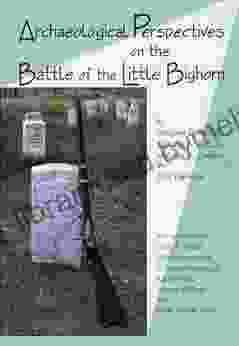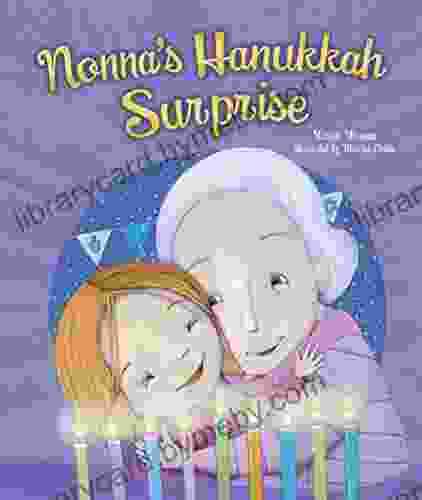Unveiling the Hidden Truths: Archaeological Perspectives on the Battle of the Little Bighorn

The Battle of the Little Bighorn, forever etched in the annals of history, has long captivated the minds of historians and enthusiasts alike. As one of the most iconic battles between Native American tribes and the United States Army, it has become a subject of endless fascination and debate.
4.5 out of 5
| Language | : | English |
| File size | : | 23720 KB |
| Text-to-Speech | : | Enabled |
| Screen Reader | : | Supported |
| Enhanced typesetting | : | Enabled |
| Word Wise | : | Enabled |
| Print length | : | 328 pages |
In recent decades, archaeology has emerged as a powerful tool to shed new light on this pivotal event. By meticulously excavating battlefields, analyzing artifacts, and studying human remains, archaeologists are unlocking a wealth of information that has the potential to transform our understanding of the battle.
Uncovering the Physical Landscape
One of the most significant contributions of archaeology to the study of the Battle of the Little Bighorn has been its ability to reveal the physical landscape of the battlefield. By carefully mapping the terrain and identifying the exact locations of key events, archaeologists have provided a more precise account of the battle's unfolding.
For instance, excavations at the site of the Last Stand revealed the presence of several shallow rifle pits, suggesting that Custer's troops had taken cover during the final moments of the battle. This discovery has helped to refute the long-held belief that the soldiers fought in a more open formation.
Revealing the Material Culture
Archaeological excavations have also yielded a vast array of material culture, including weapons, ammunition, personal belongings, and food remains. These artifacts provide invaluable insights into the daily lives and experiences of the soldiers and Native Americans who participated in the battle.
The discovery of shell casings and spent bullets has helped to determine the locations of specific units and the sequence of events during the battle. The analysis of food remains has revealed the dietary habits of the participants, shedding light on their logistics and supply chains.
Understanding Human Remains
One of the most sensitive and ethically challenging aspects of battlefield archaeology is the study of human remains. By carefully excavating and analyzing these remains, archaeologists have gained valuable insights into the identities, ages, and injuries of the individuals who fought and died at the Little Bighorn.
For example, the discovery of a soldier's remains with a gold tooth and a regimental button helped to identify him as Private Charles Windolph, a member of Company C, 7th Cavalry. Similarly, the analysis of skull fragments has revealed that many of the Native American casualties were young men, potentially indicating the presence of Lakota warriors from the Hunkpapa and Oglala bands.
Challenging Historical Narratives
Archaeological findings have also played a crucial role in challenging long-held historical narratives about the Battle of the Little Bighorn. By providing empirical evidence that contradicts traditional accounts, archaeologists have forced historians to re-examine their assumptions and interpretations.
One example is the discovery of a large number of spent cartridges in the area where Custer's troops made their last stand. This has led some archaeologists to argue that the battle was not a one-sided massacre, as previously believed, but rather a more evenly matched engagement.
Preserving and Interpreting the Battlefield
In addition to its research value, battlefield archaeology also plays a vital role in preserving and interpreting the physical remains of the battle. By carefully excavating and documenting the battlefield, archaeologists help to ensure that its historical significance is preserved for future generations.
At the Little Bighorn Battlefield National Monument, for example, archaeologists have worked closely with the National Park Service to develop interpretive programs and exhibits that educate visitors about the battle's history and the role of archaeology in understanding it.
Archaeology has proven to be an invaluable tool for unlocking the secrets of the Battle of the Little Bighorn. By providing a detailed and objective perspective on the battle, archaeologists have helped to reshape our understanding of this iconic event and the people who participated in it.
As technology advances and research continues, we can expect archaeology to continue to shed new light on the Battle of the Little Bighorn, revealing even more hidden truths and enriching our appreciation for this pivotal moment in American history.
4.5 out of 5
| Language | : | English |
| File size | : | 23720 KB |
| Text-to-Speech | : | Enabled |
| Screen Reader | : | Supported |
| Enhanced typesetting | : | Enabled |
| Word Wise | : | Enabled |
| Print length | : | 328 pages |
Do you want to contribute by writing guest posts on this blog?
Please contact us and send us a resume of previous articles that you have written.
 Book
Book Novel
Novel Page
Page Chapter
Chapter Text
Text Story
Story Genre
Genre Reader
Reader Library
Library Paperback
Paperback E-book
E-book Magazine
Magazine Newspaper
Newspaper Paragraph
Paragraph Sentence
Sentence Bookmark
Bookmark Shelf
Shelf Glossary
Glossary Bibliography
Bibliography Foreword
Foreword Preface
Preface Synopsis
Synopsis Annotation
Annotation Footnote
Footnote Manuscript
Manuscript Scroll
Scroll Codex
Codex Tome
Tome Bestseller
Bestseller Classics
Classics Library card
Library card Narrative
Narrative Biography
Biography Autobiography
Autobiography Memoir
Memoir Reference
Reference Encyclopedia
Encyclopedia Bengie Molina
Bengie Molina Bill Brown
Bill Brown Jason William
Jason William Tim Wootton
Tim Wootton Jennifer Tyler Lee
Jennifer Tyler Lee Benjamin Roberts
Benjamin Roberts Warren Hilton
Warren Hilton Immigrant Writers Association
Immigrant Writers Association Blair Davis
Blair Davis Bill Robinson
Bill Robinson W E Fairbairn
W E Fairbairn Beverly Gray
Beverly Gray Brian Borgford
Brian Borgford Jason Rosenhouse
Jason Rosenhouse Stephanie South
Stephanie South Bill Manley
Bill Manley C Alan Jennings
C Alan Jennings Henry Evans
Henry Evans Brad Klontz
Brad Klontz Benjamin Douglas
Benjamin Douglas
Light bulbAdvertise smarter! Our strategic ad space ensures maximum exposure. Reserve your spot today!
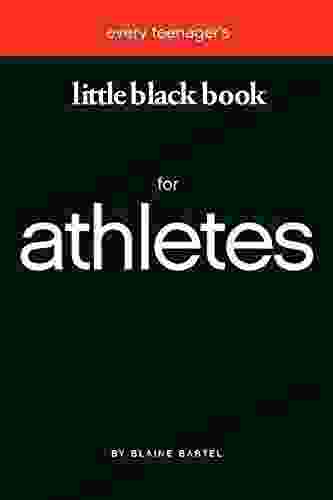
 John SteinbeckUnlock Your Potential: The Ultimate Guide for Athletes - Little Black For...
John SteinbeckUnlock Your Potential: The Ultimate Guide for Athletes - Little Black For...
 Larry ReedTourism Globalization and Cultural Identity: Unlocking the Past, Present, and...
Larry ReedTourism Globalization and Cultural Identity: Unlocking the Past, Present, and... Chinua AchebeFollow ·8.8k
Chinua AchebeFollow ·8.8k Juan RulfoFollow ·16.2k
Juan RulfoFollow ·16.2k Manuel ButlerFollow ·16.5k
Manuel ButlerFollow ·16.5k Cody BlairFollow ·16.2k
Cody BlairFollow ·16.2k Harvey BellFollow ·8.6k
Harvey BellFollow ·8.6k Quentin PowellFollow ·3.5k
Quentin PowellFollow ·3.5k Trevor BellFollow ·8.3k
Trevor BellFollow ·8.3k Griffin MitchellFollow ·5.1k
Griffin MitchellFollow ·5.1k

 Ivan Cox
Ivan CoxSpeak With Ease: The Ultimate Guide to Public Speaking...
By Rupika Raj ...

 Jesus Mitchell
Jesus MitchellVulcan Forge: A Suspense Thriller that Will Keep You on...
Vulcan Forge is...

 Dashawn Hayes
Dashawn HayesThe Carteret Family Bob Martin: A Comprehensive Review
Bob Martin's...
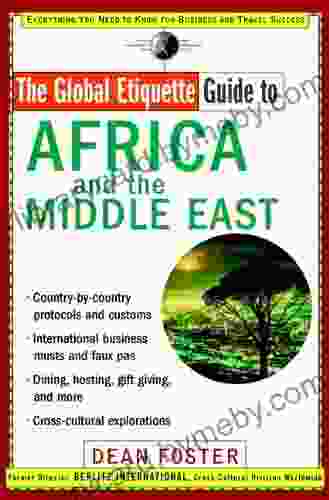
 Owen Simmons
Owen SimmonsUnlock the World of Cultural Nuances with "The Global...
Embark on a Journey of...
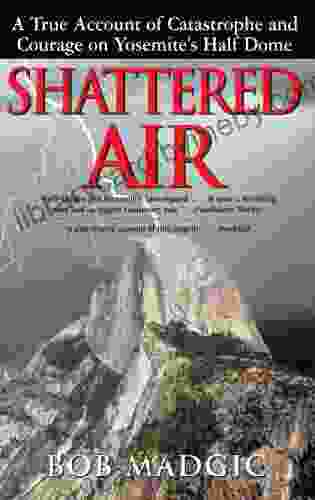
 Ian McEwan
Ian McEwanConquer the Mountain: True Account of Catastrophe and...
In the heart of California's stunning...
4.5 out of 5
| Language | : | English |
| File size | : | 23720 KB |
| Text-to-Speech | : | Enabled |
| Screen Reader | : | Supported |
| Enhanced typesetting | : | Enabled |
| Word Wise | : | Enabled |
| Print length | : | 328 pages |


